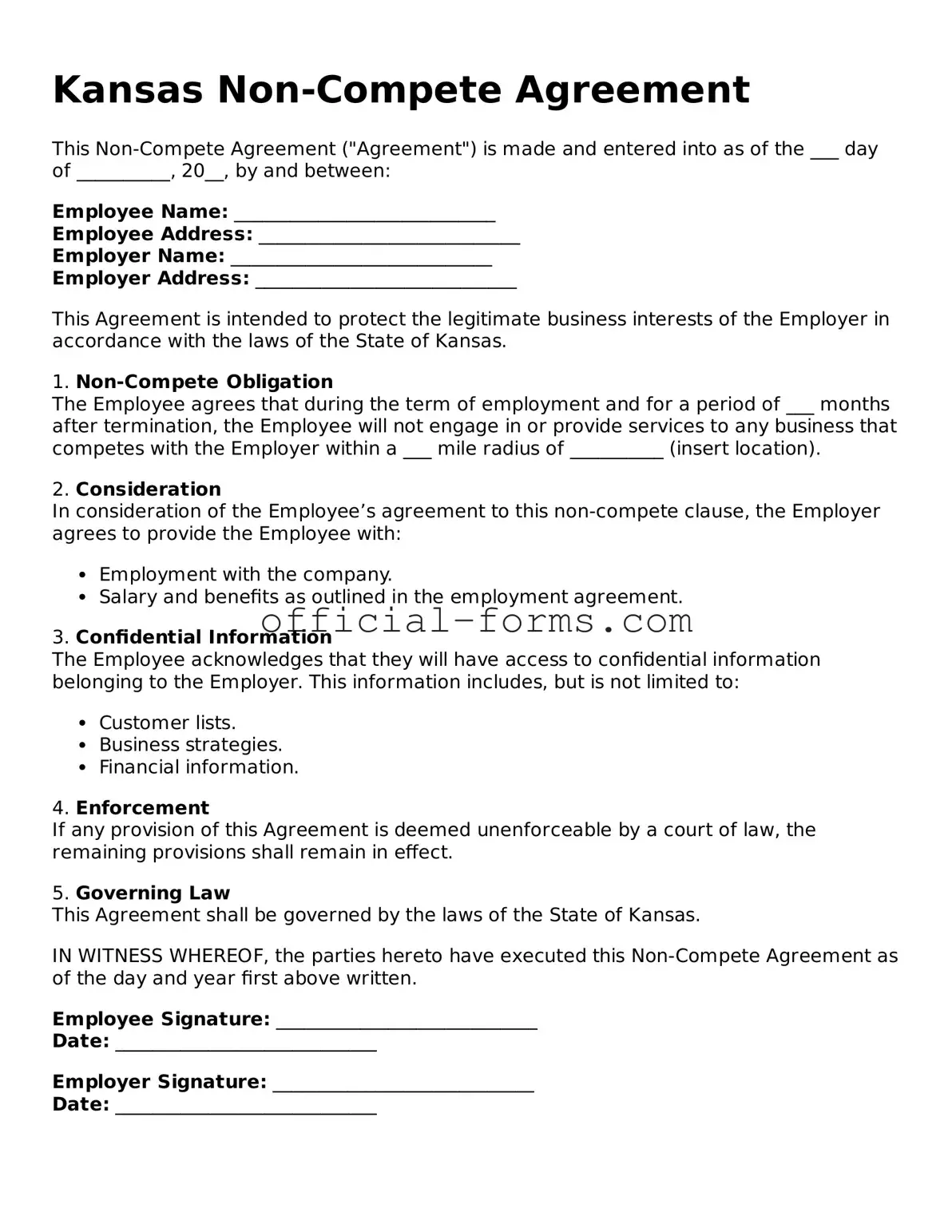Official Kansas Non-compete Agreement Document
A Kansas Non-compete Agreement form is a legal document that restricts an employee from working for competitors or starting a similar business within a specified time frame after leaving a job. These agreements aim to protect the interests of employers by safeguarding confidential information and business strategies. Understanding the nuances of this form is essential for both employers and employees to navigate their rights and obligations effectively.
Open My Non-compete Agreement Now
